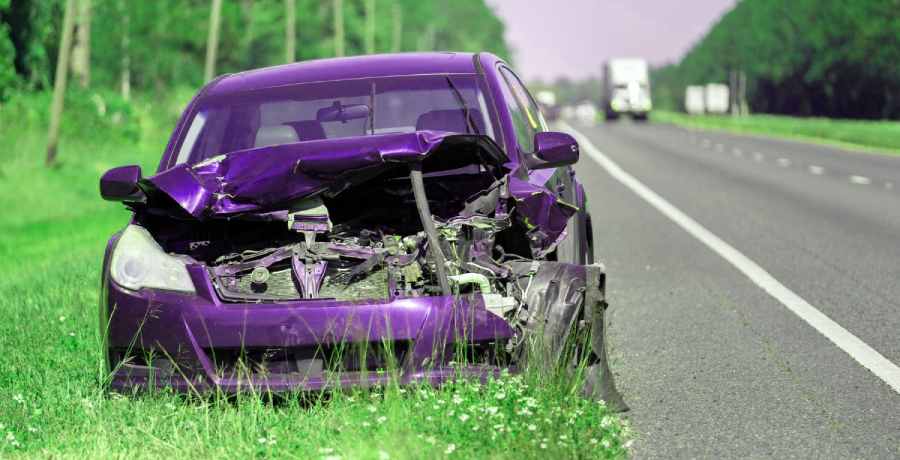When your car is involved in an accident and is declared a total loss, this means it’s no longer worth repairing. Many people also know this as a car being totaled. It happens when your car’s cost of repair plus its salvage value is equal to or more than a fixed percentage of the vehicle’s ACV. If 50% is the fixed percentage, and your car’s ACV is $33,000, and its repair cost plus salvage value is $16,500, your vehicle is a total loss.
ACV stands for actual cash value, the market value of the vehicle immediately before the accident. If $33,000 is the market value of your car before the accident, then the actual cash value for the vehicle is $33,000. Remember that ACV is not the amount you paid for your car.
After your vehicle is involved in an accident and damaged, it still has some worth. The leftover value of your vehicle is its salvage value. If your car is worth $3,000 after it’s damaged in an accident, then $3,000 is the salvage value of your vehicle.
The total loss threshold is a percentage set by state laws that determines whether a car is a total loss or not. If your vehicle cash value before the accident was $30,000, and its repair cost and salvage value sum to $15,000, and the vehicle is declared a total loss, then 50% is the threshold limit. This threshold limit can differ depending on the state. Some states, like Idaho, california, even feature a 100% threshold. So, your car isn’t a total loss as long as its repair cost plus salvage value equals the actual cash value for the vehicle.
New Mexico doesn’t use a threshold limit to declare a vehicle a total loss; instead, it uses the Total Loss Formula. As per this formula, if a car’s actual cash value is less than its estimated repair cost plus salvage value, only then can a car be a total loss. Suppose the actual cash value of your car is $33,000; then the sum of its estimated repair cost plus salvage value must be more than $33,000. If it’s less than $33,000, congratulations, your car isn’t a total loss.
Unlike regular total loss, a constructive total loss is the situation when the car owner decides that repairing their car isn’t worth it anymore. Generally, a vehicle is considered a total loss according to its threshold limit, which is typically 75% of the car's cash value. However, your vehicle can be considered a constructive total loss if you declare so, although the vehicle’s estimated repair plus salvage value does not equal that value.
As per the New Mexico Total Loss Threshold laws, if your car is declared a total loss, the insurance will pay you its actual cash value, not the original price of the vehicle. It is called an ACV settlement. If you disagree with the offered amount, you have the right to negotiate with the assigned adjuster.
The following points will help you file a total loss threshold claim in New Mexico.
When your car is involved in an accident, the first thing you should do is call the car insurance company and initiate the claim process. Then, you can brief them about the incident and share details, including the date, time, location, circumstances, etc. You also need to inform the police about the incident and file a report.
Then, collect all the necessary documents related to this accident. These documents will include the police report, photos and videos of your damaged vehicle from various angles, repair estimates from two to three auto body shops, the vehicle title, and other things. All these documents will serve as evidence and help you present the car accident case.
The insurance company will assign an adjuster to inspect the damage to your car and determine whether the vehicle is a total loss or not. The adjuster will then do the same and discuss everything with you. Then, they will assess your provided documents and determine the vehicle’s actual cash value.
Depending on the laws, the insurance provider will determine whether the car is a total loss or not. In New Mexico, cars are declared a total loss using the TLF formula; still, the insurance provider may use a percentage formula to determine this.
If you accept the settlement offer, they will title the car as salvaged and pay you the ACV of the vehicle.

The following 2 tips will help you get a fairer settlement from the insurance company.
You can hire an independent appraiser to get your car appraised. They will provide you with a detailed appraisal report, which you can add to the documents and negotiate for a higher payout.
As a last resort, you can hire an attorney experienced in car accident cases. They will handle your case and help you get a higher payout.
We are ADR Claim, an independent appraiser team devoted to providing you with accurate and detailed appraisal reports. Whether you need an appraisal report for an insurance claim or want to determine its market value, we can help you. Call us for a free quote and enjoy a hassle-free appraisal process.
Our quick and simple appraisal process can help you recoup vehicle-related losses.